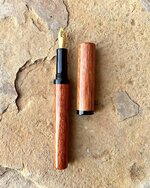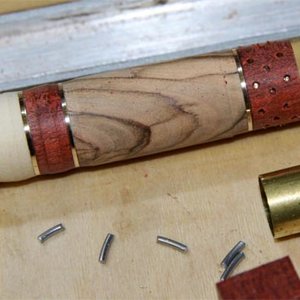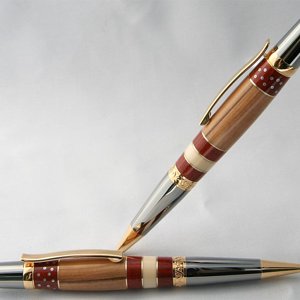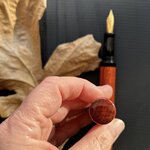Stunning combination! I have turned a few Bloodwood pens, but nothing kitless (yet).
If you are looking to try some different woods and don't want to commit to buying whole boards, I have found WoodShopGas on ebay to be reasonably priced and you can buy what exactly what you want, species, quantity and he ships quickly. He has some Birdseye Bloodwood. It doesn't have the density of birds eyes that maple can, but it is still pretty cool.
A life-long love of wood... I started working in my father's woodshop at 5 years old. I have been sawing, turning, sanding and finishing ever since. I started Woodshop G.A.S. (Gear Acquisition Syndrome) a few years ago shortly after I had once again purchased wood from a vendor that was...
www.ebay.com
I have only just begun my journey into kitless, so I hope you don't mind a few questions for you (sorry in advance):
- Do you sleeve the wood with solid ebonite first and then cut & thread the tenon/drill and tap bores? Or do you do all that first and then glue in the sleeves?
- Looks like CA finish, how do you treat the ebonite portions, do you just CA over turned/sanded ebonite and then polish the whole body/cap or is there special treatment/process. So far, I have only used ebonite for making sections.
- Are you doing all of this on a wood lathe?
The one kitless pen I made with a hybrid blank, I used the Alumilite portions for the threading and tapping. To try to protect and seal the wood inside the body and cap, and to keep the nib from drying out, I used thin CA to soak/seal the inside of the body and cap. It seems to have worked pretty well.






